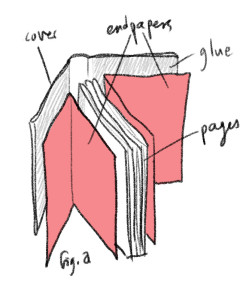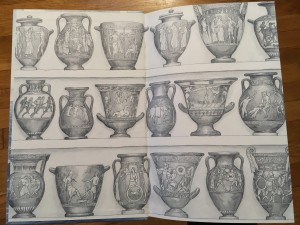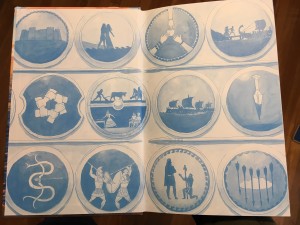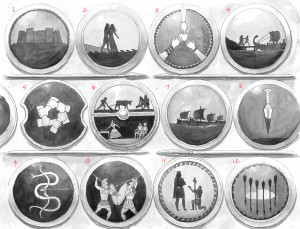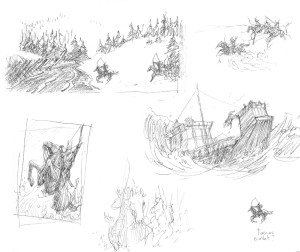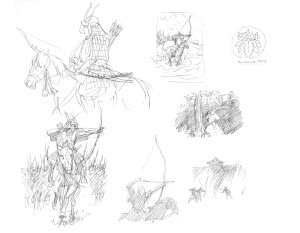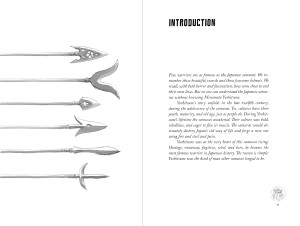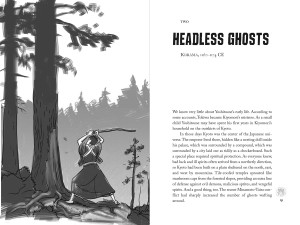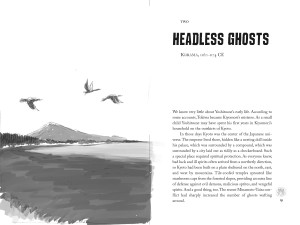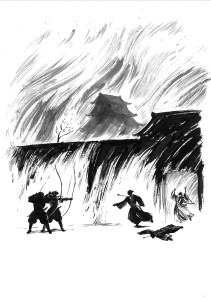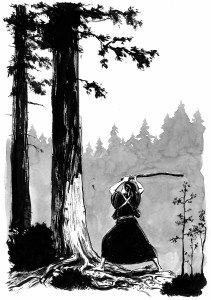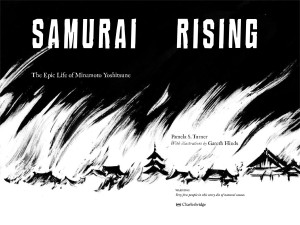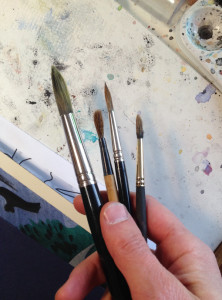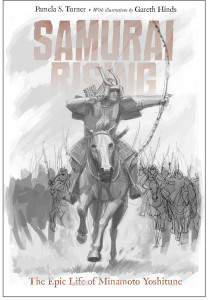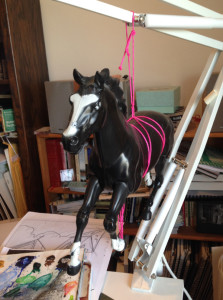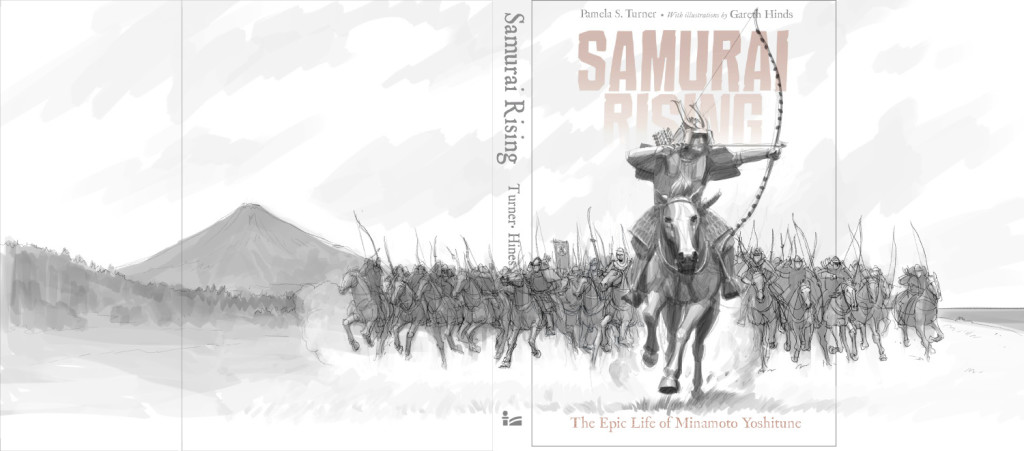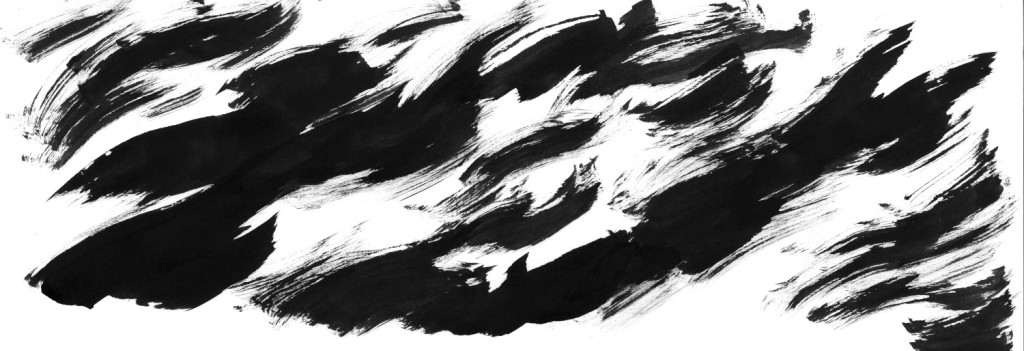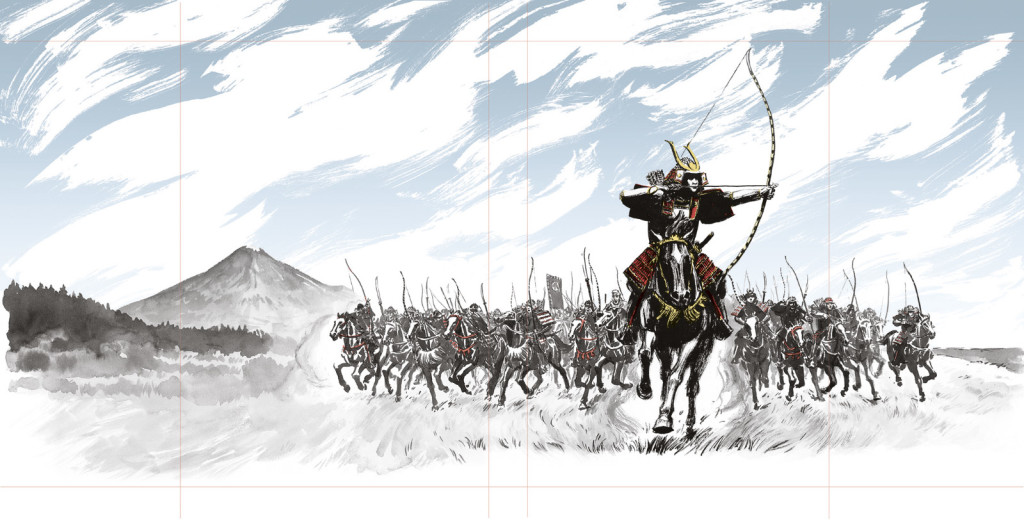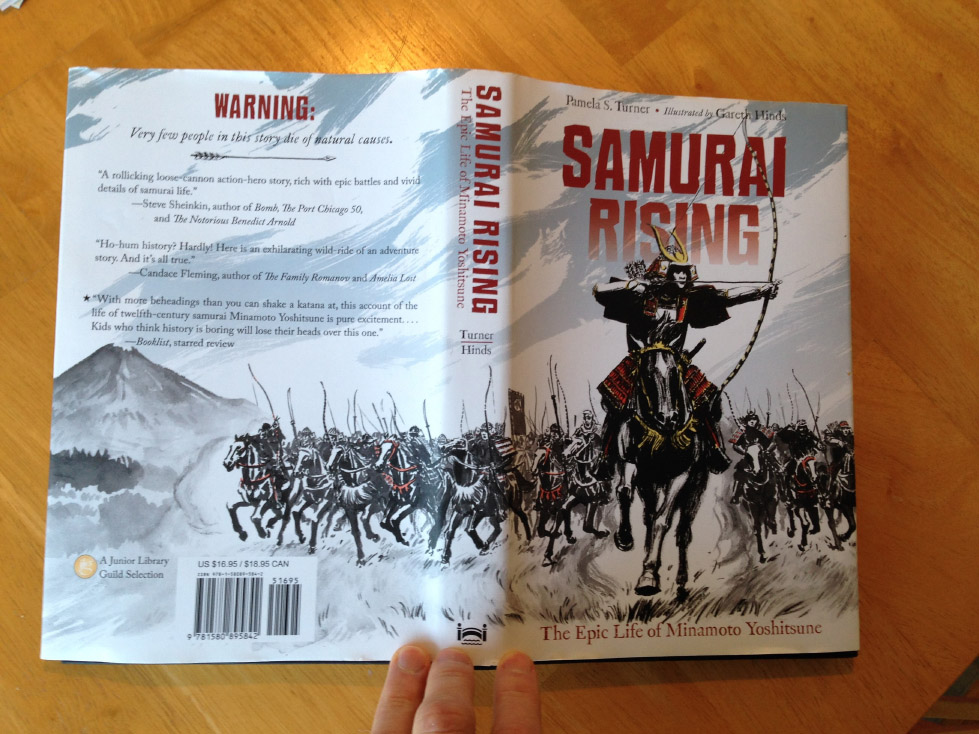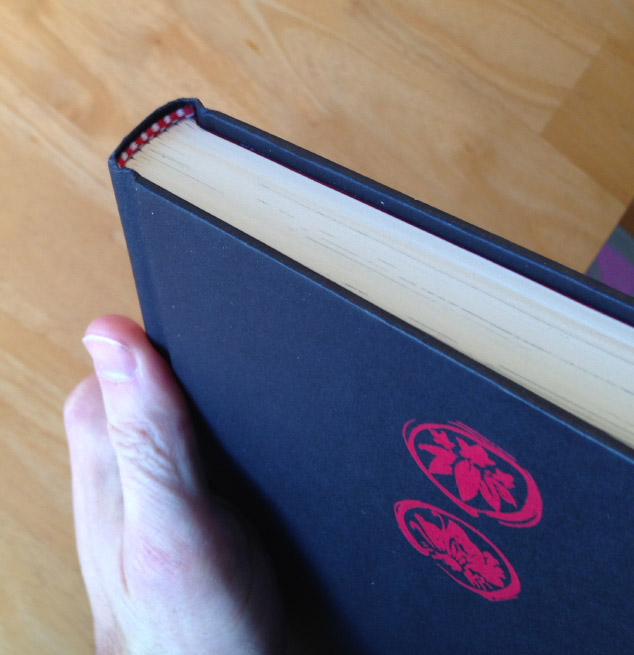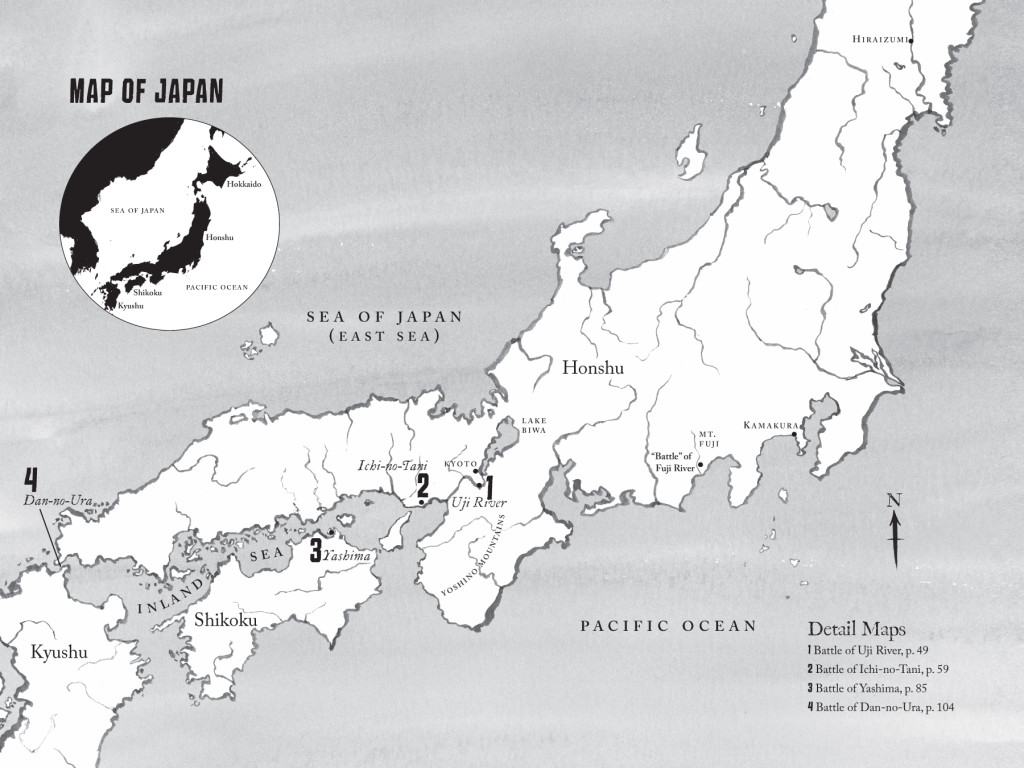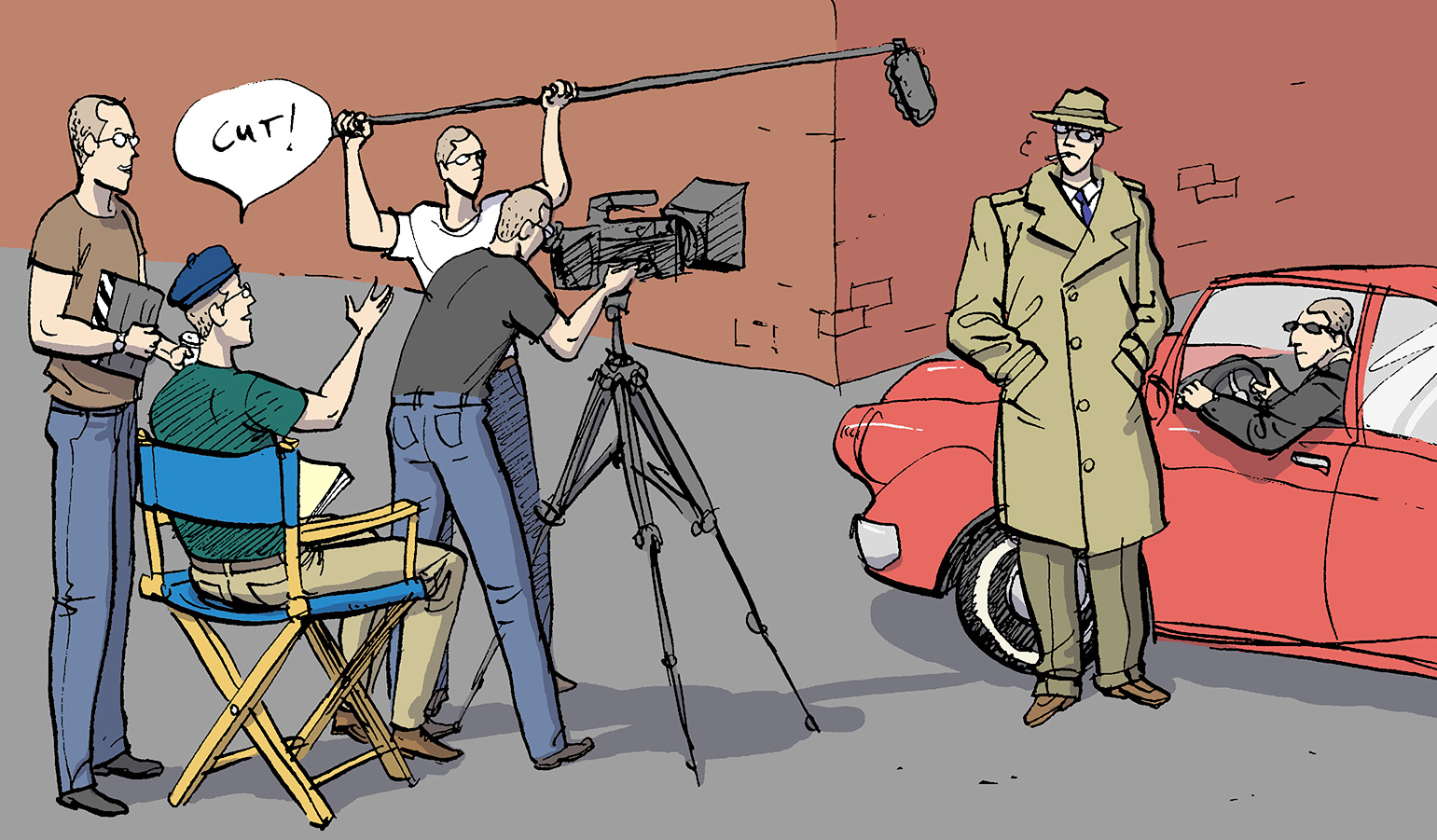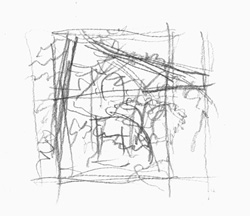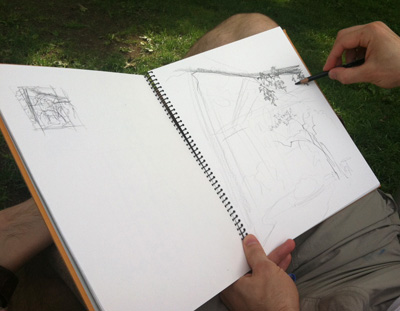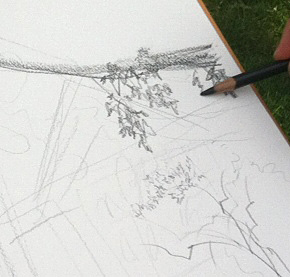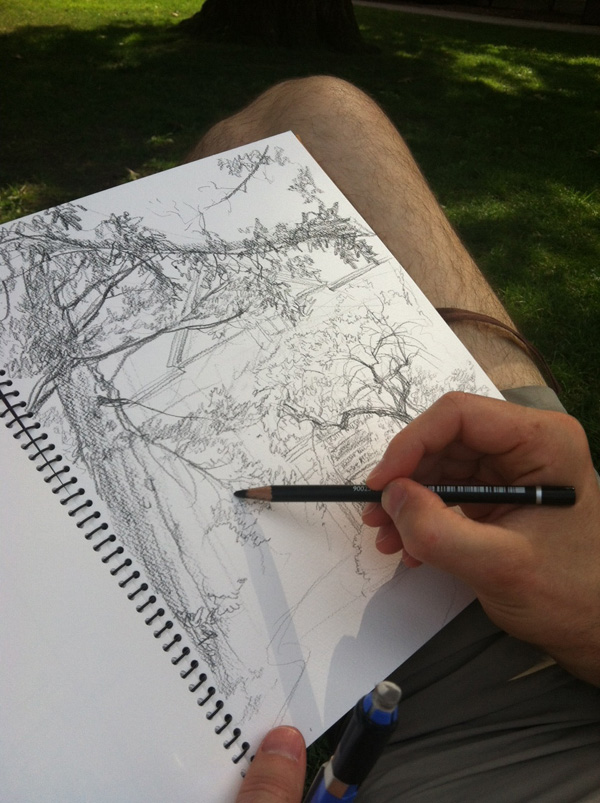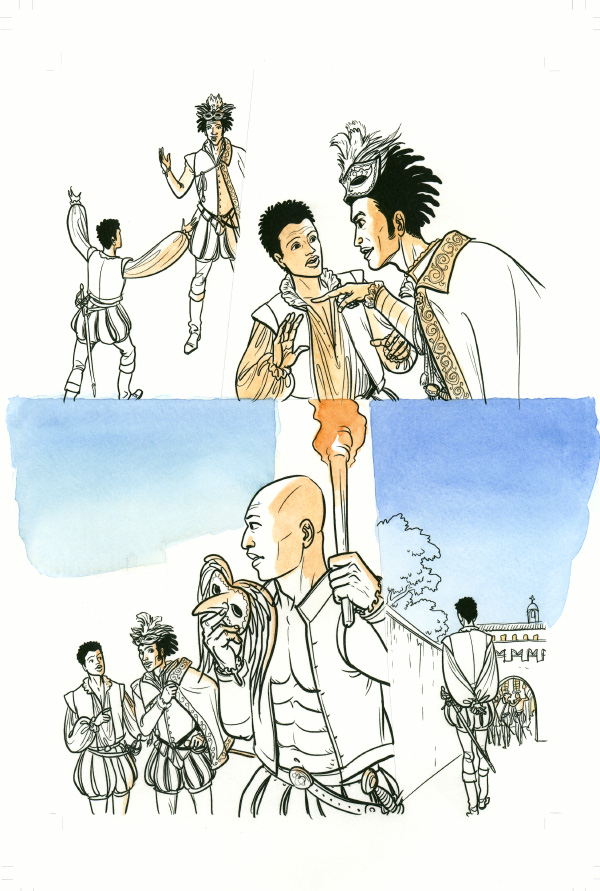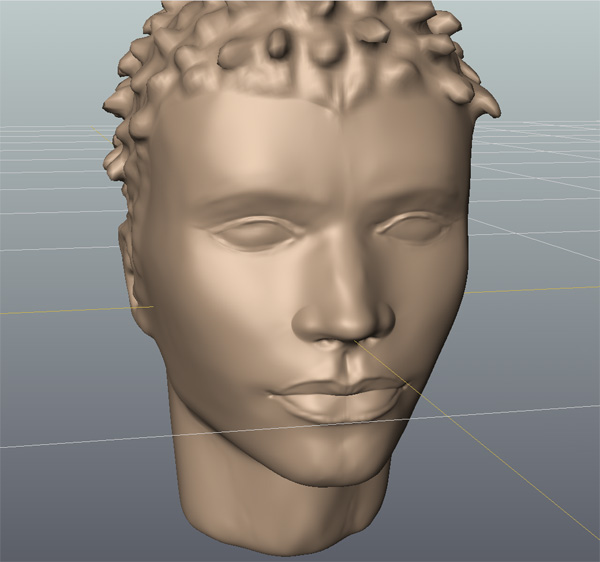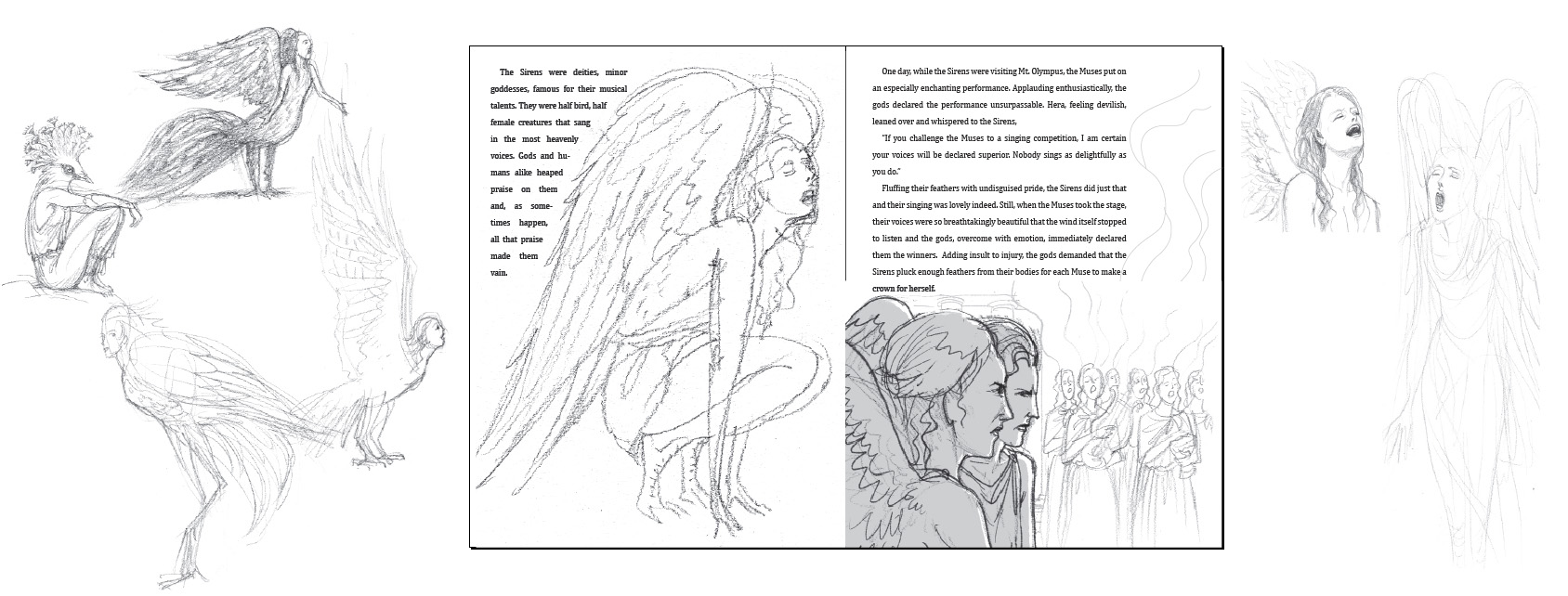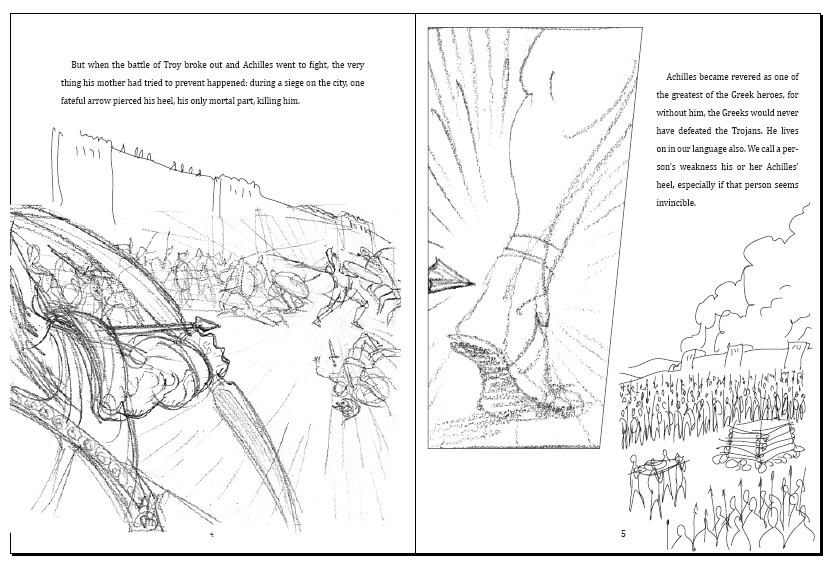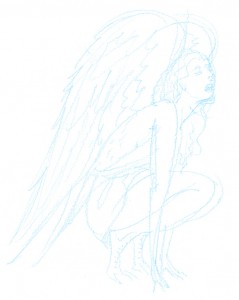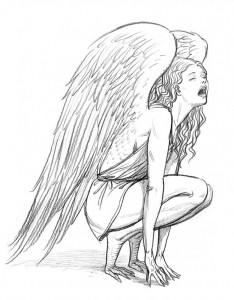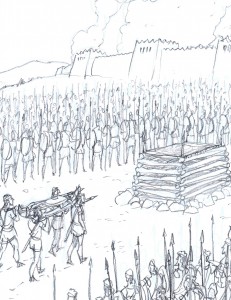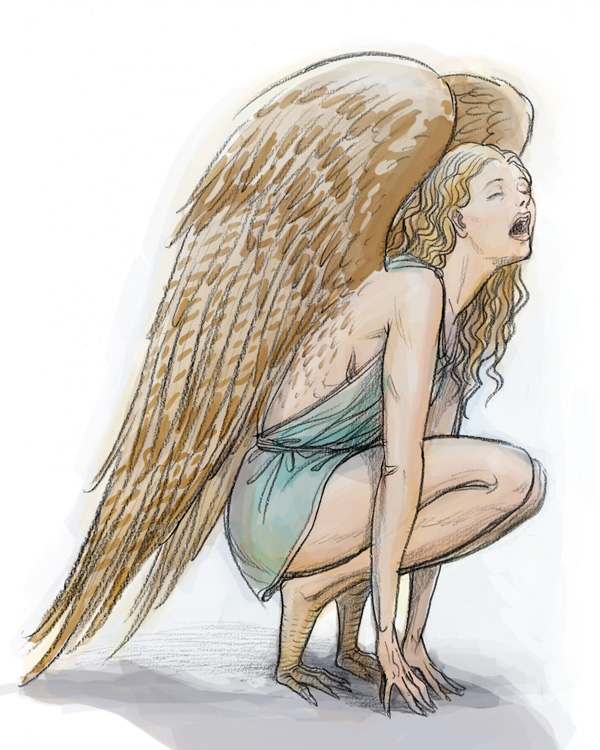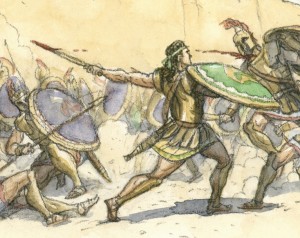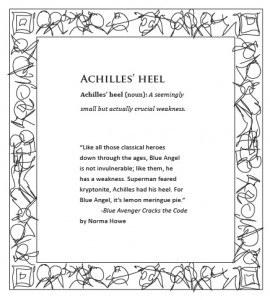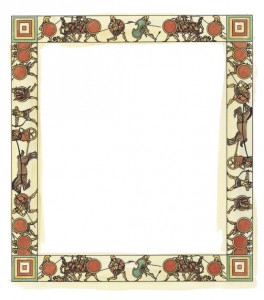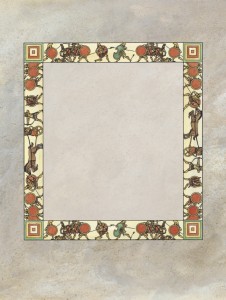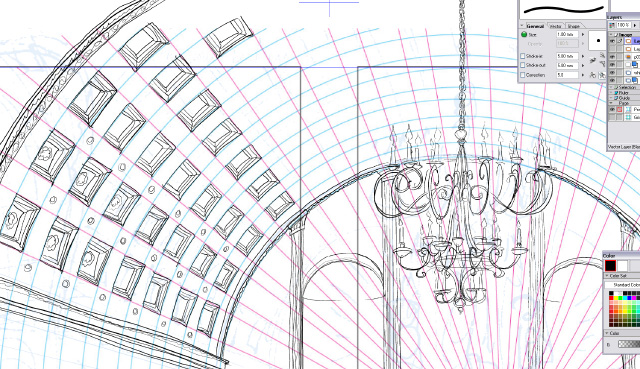Apr 08 2019
All About Endpapers, or What You’ve Been Missing If You’ve Only Seen the Paperback of The Odyssey and The Iliad
A lot of my readers are not aware that the hardcover editions of The Odyssey and The Iliad have art in them that does not appear in the paperback editions.
At the beginning and end of a hardcover book is something called the Endpapers (or simply “ends”). These are usually separate sheets of paper that are used to bind the inside pages to the cover.
Here are the endpapers I created for The Odyssey (click to see larger!)
These are all actual vase paintings from classical Greece. Some of them are explicitly scenes from The Odyssey, others I just found thematically appropriate to allude to the story of Odysseus. In some cases I changed what kind of vessel they are painted on — in real life some are tiny and some are huge, and I wanted them to be more uniform in size.
For The Iliad, I chose a different approach. Here I use shields to tell the story of the lead-up to The Iliad. Again, you will only get these if you get the hardcover; but now at least you can see what you’re missing. In the book they’re printed in blue.
The designs on Greek shields tend to be much less narrative than the vase paintings, so in this case I didn’t use real historical ones. (Quite a few of the shield designs inside the book are real, though not necessarily from the Bronze Age — but these I made up to tell the story, stylizing them in a way I think is reasonably consistent with Greek shield painting.)
They summarize the story of the beginnings of the Trojan War, as follows: (1) the founding of Troy, (2) Thetis and Peleus, (3) the Apple of Discord, (4) the abduction of Helen, (5) invoking the oath of the Achaean Kings, (6) Odysseus and Achilles being tricked into revealing themselves (as, respectively, sane and not a girl), (7) the fleet launching, (8) the sacrifice of Iphegenia at Aulis, (9) the archer Philoctetes bitten by a serpent, (10) the beginning of the war, (11) Chryses’ appeal to Agamemnon, and (12) the plague-arrows sent by Apollo.
Those, by the way, are all cool stories you should look up if you don’t know them 😉
Not all of my books have bonus artwork on the endpapers of the hardcover. If you’re wondering why that is, continue to Part 2, In Which the Author Geeks Out About Bookbinding.
